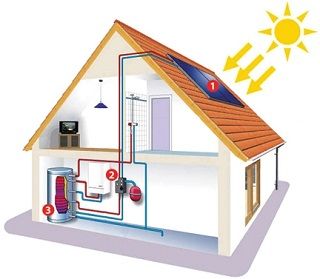A Unique Approach to Solar Thermal Water Heating – But Will Business Partners Care?

“It’s not about us, it’s about them,” as I like to explain. Sure we need to explain the product: its materials, its functionality, its price, etc. But first we need a reader who cares about the subject under discussion – in this case, finding a manufacturing partner to take on a new approach to solar thermal hot water heating. Here, I’m recommending we start with something like the following:
Solar Thermal Water Heaters — Serving an Enormous Market with a Brilliant New Solution
The average American family uses 64 gallons of hot water every day. 9% of U.S. buildings’ energy use is hot water. For certain industries, including dairies, laundromats, and hotels, hot water is a huge component of their overall costs.
Question: How is this enormous volume of water heated — and at what cost?
Answer: Fossil fuels account for 72% — almost three-quarters — of all the energy we use in our buildings.
Solar thermal water heating uses the energy coming to us from the sun – energy that costs absolutely nothing and has essentially a zero environmental footprint to collect and distribute.
OK, but how cost-effective is it, given the overall cost of materials and installation? Please read on. The answer, based on a recent engineering breakthrough, may surprise you.
Here, I’d go into various potentially exciting ideas about the product and the IP behind it: how it works, its patents, awards, eco-friendly use of materials, etc. Eventually, I’d return to the cost-effectiveness issue, and try to be as persuasive as possible that a business partner will be successful, based on high levels of demand and really attractive operating margins:
Even in the modest volumes that will be delivered immediately, when we add up the costs of all the componentry for the system (acrylic reflector panels, clear panels, and pipe filament, as well as the aluminum and PVC extrusions), we project that PlexiSun can be manufactured for approximately $40 per square foot. At scale, of course, costs will come down dramatically.
Given the high efficiency of the system, we predict that a user with both average solar irradiance and average cost of energy will realize a complete return on his/her investment in less than three years, and, in ideal conditions, this period can be reduced to less than 12 months. On top of that, add government incentives and the customer’s concern for the environment, at which point PlexiSun becomes one of the easiest sales on Earth.
How will this play with the target market? We’ll find out soon, and I’ll keep you posted.

do you use this pannel in your home
No, it wouldn’t work well here — too much shade.